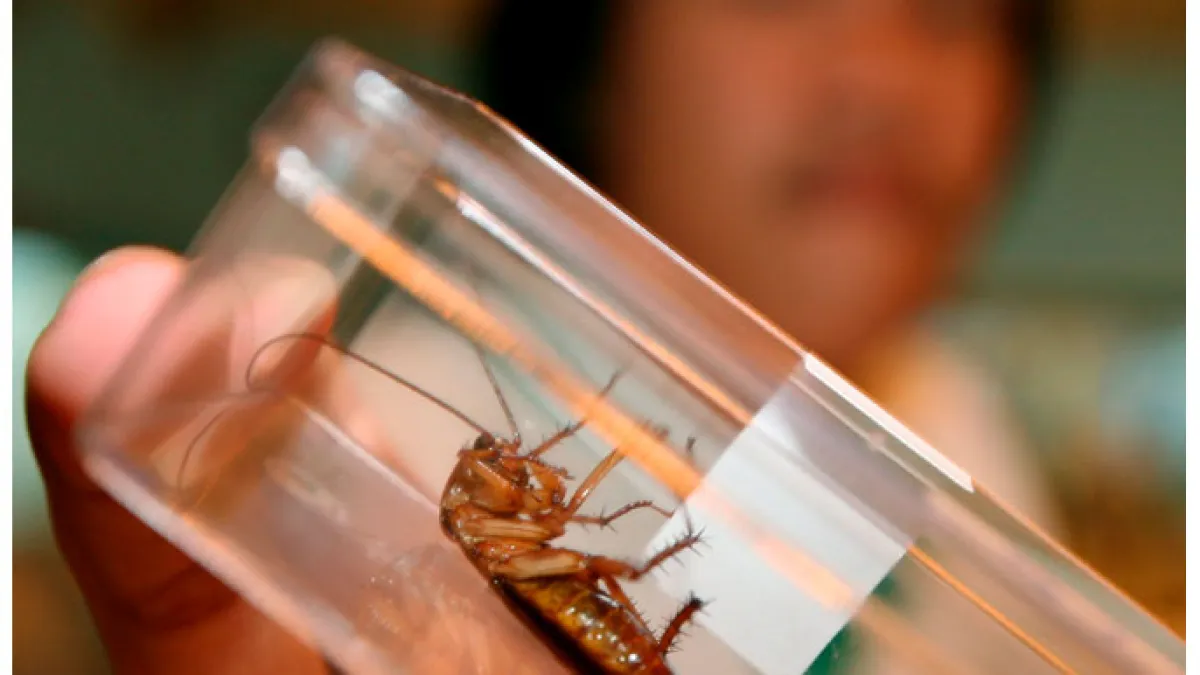
لبنان اليوم
In the corners of dark kitchens or behind refrigerators, those small creatures that disgust many may be moving, without full awareness of their hidden repercussions.
But a recent scientific study published in the “Journal of Allergy and Clinical Immunology” revealed that cockroaches are not just disgusting insects, but may be a real source of indoor air pollution. These insects release tiny toxic components into dust and air, which may negatively affect the health of residents, especially children and allergy and asthma sufferers.
Chemistry analyzes dust:
To reach these results, a research team from North Carolina State University conducted a study in a number of homes, some with widespread cockroach infestation and others without. They used special vacuum cleaners and dust collection equipment free of any pollutants, and then stored the samples in sterile tubes.
The aim was to examine the dust, as it carries insect remains and microscopic microbes that reflect the state of the indoor environment of the house. From the collected samples, the team conducted chemical analyzes to measure the concentration of cockroach-related allergens, such as proteins found in their feces and decaying bodies.
These measurements are commonly used to estimate the level of allergic risk in homes, especially for people with asthma or dust allergy. To detect bacterial toxins, the researchers used a sensitive bioassay known as the Limulus Amebocyte Lysate test, which relies on the reaction of a component of horseshoe crab blood with endotoxins, generating a measurable signal.
This test has been the global gold standard for detecting endotoxins for over 50 years, thanks to its very high sensitivity, as it can detect minute amounts of endotoxins even at very low concentrations (parts of a nanogram unit per milliliter). After analysis, it was found that homes with more cockroaches also contained much higher levels of endotoxins and allergenic triggers, compared to clean homes or those that did not experience a large spread of the insect.
What are endotoxins?
Endotoxins, or “internal toxins,” are toxic substances produced by some types of bacteria, specifically gram-negative bacteria. These toxins are not secreted directly into the environment, but are part of the outer membrane of the bacterial cell wall.
When bacteria die or decompose, endotoxins are released into the surrounding environment, and here the problem begins, as they are able to trigger a strong immune response inside the human body. When they enter the body (through inhalation, wounds, or the digestive system), endotoxins stimulate immune cells to secrete inflammatory molecules such as cytokines.
If the exposure is simple, it may cause irritation in the respiratory system or allergy symptoms. But with chronic or intense exposure (as in cockroach-infested homes, farms, or old hospitals), it may lead to chronic inflammation of the airways and exacerbation of asthma attacks. In extreme cases (when entering the blood), it may lead to septic shock, which is a very serious medical condition.
Surprises in the study:
The striking thing about this study is that the researchers discovered an unexpected biological difference, as female cockroaches secrete twice the amount of endotoxins secreted by males. The reason is simple but disturbing, according to the study, which is that females consume more food and produce more waste, and this waste is the main source of those polluting compounds.
In other words, the more females in a cockroach colony, the greater the risk of internal contamination without residents noticing anything. As the scientists expected, the kitchen was the highest pollution hotspot, given the abundance of food, humidity, and warmth, which are ideal conditions for cockroach reproduction.
But the surprise is that endotoxins and allergenic triggers do not remain trapped in the dust; rather, they can move into the air and settle in air conditioning and ventilation systems, which makes them reach bedrooms and living rooms as well.
A danger worth intervening:
The study showed that in some homes where effective pest control programs were implemented, the scientific team noticed a significant decrease in the levels of allergenic substances within just a few weeks. This means that getting rid of cockroaches not only achieves psychological comfort, but also actually improves indoor air quality, and reduces the chances of respiratory irritation or asthma attacks in children.
These results indicate that home environmental health is not only about apparent cleanliness, but includes microscopic pollutants that may be produced by organisms that live with us without us noticing, as the scientists explain. In low-income communities, where ventilation systems are less effective and pest control is delayed, the problem may turn into an issue of health justice, because children in these homes are more exposed to environmental risks that they do not cause themselves.
source: 961 today












